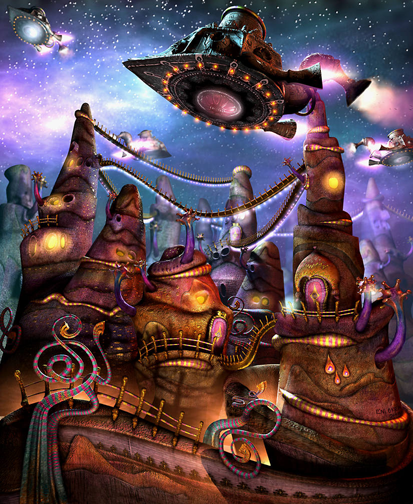Lights and cameras are scene objects that simulate their real-world counterparts.

“Little Village Far, Far Away”
Copyright © 2000 Eni Oken
Lights provide illumination for the geometry of a scene: they can light the scene from “offstage,” or, with a little extra work, they can appear within the scene itself. Standard lights are simple and easy to use. Photometric lights are more complex, but provide a physically accurate model of real-world lighting. The Daylight and Sunlight systems create outdoor lighting that simulates sunlight based on location and time of day, month and year. You can animate the time of day to create shadow studies.
Cameras frame the scene, providing a controllable point of view. You can animate camera movement. Cameras can simulate some aspects of real-world photography, such as depth-of-field and motion blur.
Lights are objects that simulate real lights such as household or office lamps, the light instruments used in stage and film work, and the sun itself. Different kinds of light objects cast light in different ways, emulating different kinds of real-world light sources.
The Lighting Analysis Assistant is a dialog that helps you coordinate and adjust the various tools that 3ds Max provides to help you analyze the lighting of a scene. With the Lighting Analysis Assistant, you can discover what tools you need, and correct their settings to achieve an accurate lighting simulation.
Cameras present a scene from a particular point of view. Camera objects simulate still-image, motion picture, or video cameras in the real world.